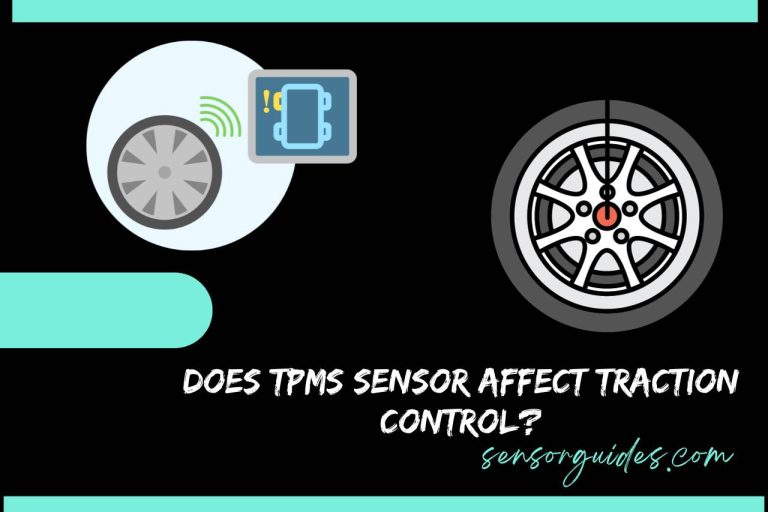6.0 Powerstroke Oil Pressure Sensor Symptoms; Everything You Need To Know
Understanding the symptoms of a failing oil pressure sensor in a 6.0 Powerstroke engine is essential for maintaining engine health and performance.
This article explores the telltale signs that your oil pressure sensor may be in trouble. Whether it’s erratic gauge readings or warning lights on your dashboard, knowing these symptoms can help you address potential issues before they escalate, ensuring the reliability of your Powerstroke engine.
Table of Contents
What really the Oil presssure sensor do in 6.0 Powerstroke?

In a 6.0 Powerstroke engine, the oil pressure sensor plays a vital role in monitoring the oil pressure within the engine. Its primary functions and importance are as follows:
- Oil Pressure Monitoring: The oil pressure sensor continuously measures the level of oil pressure in the engine. This information is crucial because it ensures that there is sufficient lubrication throughout the engine components.
- Engine Lubrication: Maintaining proper oil pressure is essential for lubricating various engine parts, including the bearings, crankshaft, camshaft, pistons, and other critical components. Adequate lubrication reduces friction, heat, and wear, ultimately prolonging the engine’s lifespan and ensuring smooth operation.
- Protection Against Damage: The oil pressure sensor serves as a safety feature. If it detects low oil pressure, it triggers a warning light or gauge on the dashboard to alert the driver. Low oil pressure can lead to engine damage, so this warning is critical for preventing costly repairs and engine failure.
- Optimizing Performance: By monitoring oil pressure, the engine control unit (ECU) can make real-time adjustments to optimize engine performance. This includes adjusting fuel injection timing and other parameters to ensure the engine operates efficiently.
In summary, the oil pressure sensor in a 6.0 Powerstroke engine is responsible for monitoring oil pressure levels to ensure proper lubrication of engine components. It plays a crucial role in protecting the engine from damage and optimizing its performance, making it an integral part of the engine’s overall functionality.
What ara 6.0 Powerstroke Oil Pressure Sensor Symptoms?
The symptoms of a failing oil pressure sensor in a 6.0 Powerstroke engine can have various consequences, all related to the critical role of oil pressure in engine lubrication and protection. Here are the common symptoms and their explanations:
Low Oil Pressure Warning Light
The most apparent symptom is the illumination of the low oil pressure warning light on the dashboard. This light indicates that the sensor is not detecting sufficient oil pressure in the engine. Low oil pressure can be caused by sensor failure or a genuine oil pressure issue.
Engine Knocking or Ticking
When the oil pressure sensor fails, it may not accurately relay low oil pressure levels to the engine control unit (ECU). This can lead to inadequate lubrication, causing engine components like bearings and lifters to make knocking or ticking noises due to increased friction and wear.
Oil Pressure Gauge Reading Low
The oil pressure gauge on the dashboard may consistently display low oil pressure, even when the engine is running correctly. This can be a misleading indication caused by a malfunctioning sensor rather than a genuine oil pressure problem.
Oil Leaking
A failing oil pressure sensor can sometimes result in oil leaking from the engine. The sensor is typically threaded into the engine block, and if the seal deteriorates or the sensor itself is damaged, it can lead to oil seepage around the sensor location.
Engine Overheating
In extreme cases of low oil pressure due to sensor failure, the engine may overheat. This occurs because inadequate lubrication causes excessive friction and heat buildup in engine components, leading to overheating and potential engine damage.
It’s crucial to address these symptoms promptly. While a faulty oil pressure sensor is one possible cause, other issues, such as low oil levels, clogged oil filters, or genuine oil pressure problems, can also trigger these symptoms. Therefore, it’s essential to diagnose the root cause accurately and take appropriate action to prevent engine damage and maintain optimal engine performance.
Where Is the ICP Sensor on a 2003 6.0 Powerstroke? By Sensor Guides
sensor guides
How to fix 6.0 Powerstroke Oil Pressure Sensor problems?
Fixing oil pressure sensor problems in a 6.0 Powerstroke engine is crucial to ensure proper engine lubrication and prevent potential damage. Here are three effective fixes:
Method 01 – Replace the Oil Pressure Sensor
- Diagnosis: If you’ve confirmed that the oil pressure sensor is faulty, replacement is often the most direct solution.
- Steps:
- Ensure the engine is cool and safely elevated if needed.
- Locate the faulty oil pressure sensor. It’s typically threaded into the engine block.
- Carefully disconnect the electrical connector from the sensor.
- Use the appropriate wrench or socket to remove the old sensor.
- Apply a small amount of thread sealant to the threads of the new sensor to prevent oil leaks.
- Thread the new sensor into place and tighten it to the manufacturer’s specifications.
- Reconnect the electrical connector.
- Start the engine and check for proper oil pressure readings on the gauge.
Method 02 – Check and Address Oil Pressure Issues:
- Diagnosis: Sometimes, the sensor may not be the problem, and genuine low oil pressure is the issue.
- Steps:
- Ensure the oil level is correct. If low, top up with the recommended oil type.
- Inspect the oil filter for clogs or blockages. Replace it if necessary.
- Check for any oil leaks within the engine.
- If genuine low oil pressure persists, consult a mechanic for a thorough diagnosis and potential engine repairs.
Method 03 – Perform a Reset or Calibration:
- Diagnosis: In some cases, the oil pressure sensor may give erroneous readings due to electrical issues or sensor calibration problems.
- Steps:
- Consult the vehicle’s service manual to determine if a reset or calibration procedure is available for the specific sensor.
- Follow the prescribed steps, which often involve using the vehicle’s controls or diagnostic tools.
- After the reset or calibration, monitor the oil pressure gauge to ensure it displays accurate readings.
It’s essential to accurately diagnose the issue before proceeding with any fix. If you are uncertain about the cause of the problem or if the symptoms persist after trying these fixes, it is advisable to seek professional assistance from a qualified mechanic. Ignoring or misdiagnosing oil pressure sensor issues can lead to severe engine damage.
How can you test a oil pressure sensor in a 6.0?
Testing the oil pressure sensor in a 6.0 Powerstroke engine involves several steps to verify its functionality. Here’s a general guide on how to test the oil pressure sensor:
Tools and Materials Needed:
- Multimeter (digital or analog)
- Safety gear (safety glasses and gloves)
- Wrench or socket set
- Oil pressure gauge (optional)
Procedure:
- Safety Precautions:
- Ensure the engine is off and cool to prevent any accidents.
- Wear safety glasses and gloves to protect yourself from oil and debris.
- Locate the Oil Pressure Sensor:
- In the 6.0 Powerstroke engine, the oil pressure sensor is typically located near the oil filter housing.
- Disconnect the Electrical Connector:
- Carefully disconnect the electrical connector from the oil pressure sensor.
- Prepare the Multimeter:
- Set your multimeter to the resistance (ohms) setting.
- Measure Resistance:
- Attach the multimeter’s probes to the sensor’s electrical terminals. Ensure good contact.
- Record the resistance reading.
- Compare Readings:
- Refer to your vehicle’s service manual to find the specified resistance range for the oil pressure sensor at various temperatures.
- Compare the measured resistance to the specified range. If it falls outside the range, the sensor may be faulty.
- Optional: Test with an Oil Pressure Gauge:
- For a more comprehensive test, you can install an external oil pressure gauge temporarily.
- Remove the oil pressure sensor and install the gauge in its place.
- Start the engine and observe the oil pressure reading on the gauge.
- Compare this reading to the manufacturer’s specifications. If it’s within the normal range, it indicates the sensor is likely functioning correctly.
- Sensor Replacement:
- If the resistance reading is outside the specified range or if the oil pressure gauge indicates a problem, the oil pressure sensor may need replacement.
Always consult your vehicle’s service manual for specific instructions and resistance values, as they can vary between different engine models and manufacturers. If you are unsure about the results or the sensor’s condition, consider seeking professional assistance from a qualified mechanic.
Is it bad to drive witth bad oil pressure sensor?
Driving with a bad oil pressure sensor is not advisable and carries significant risks. The oil pressure sensor plays a critical role in monitoring engine lubrication. A malfunctioning sensor can lead to inaccurate readings or failure to detect low oil pressure.
This poses a substantial risk of engine damage due to inadequate lubrication, potentially causing engine overheating, increased friction, and accelerated wear on crucial components. Ignoring a bad oil pressure sensor may result in costly repairs or even catastrophic engine failure.
Therefore, it’s crucial to address and rectify sensor issues promptly to ensure engine health and safety on the road.




